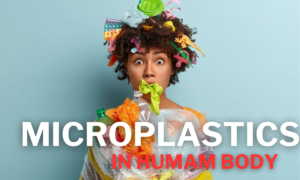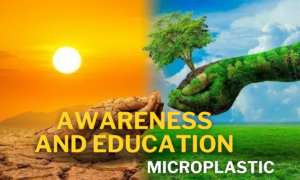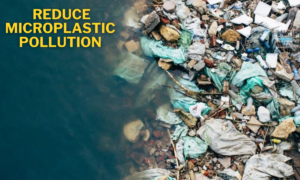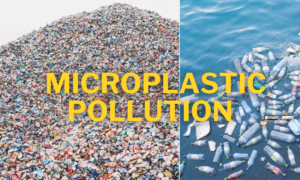Outline
- Introduction
- Brief overview of microplastics in humans
- Importance of the topic
- What Are Microplastics?
- Definition
- Types of microplastics
- Usage of Microplastics
- Industrial applications
- Everyday products
- Causes of v
- Manufacturing processes
- Breakdown of larger plastics
- Urban runoff
- Sources of Microplastics
- Primary sources
- Secondary sources
- Environmental pathways
- Microplastics in the Human Body
- How they enter the body
- Detection methods
- Health Impacts of Microplastics
- Potential risks
- Studies on health effects
- Studies on Microplastics
- Key research findings
- Notable studies
- Environmental Impact of Microplastics
- Ecosystem disruption
- Effects on wildlife
- Advantages of Microplastics
- Versatility in products
- Economic benefits
- Disadvantages of Microplastics
- Environmental harm
- Health concerns
- Efforts to Reduce Microplastics Pollution
- Government regulations
- Corporate responsibility
- Personal actions
- Innovations in Microplastic Alternatives
- Biodegradable plastics
- New materials research
- Public Awareness and Education
- Role of media
- Educational programs
- Conclusion
- Summary of key points
- Call to action
- FAQs
- What exactly are microplastics in humans , and what is the source of them ?
- How do microplastics affect human health?
- What can individuals do to reduce microplastic pollution?
- Are there any benefits to using microplastics in humans ?
- What are some recent advancements in combating microplastic pollution?
Microplastics in Humans: Usage, Causes, Source, Study, Advantage, and Disadvantage
microplastics in humans are tiny plastic particles that are causing a big stir lately. Found almost everywhere from oceans to our dinner plates, these tiny bits of plastic are becoming a significant concern. This article explores what microplastics are, how they end up in our bodies, their uses, and their impact on our health and the environment. Read more…
What Are microplastics in humans ?
Microplastics are very small pieces of plastic, less than 5 millimeters in size. There are two types:
- Primary Microplastics: These are manufactured small for products like cosmetics and toothpaste.
- Secondary Microplastics: These result from the breakdown of larger plastic items like bottles and bags.
Usage of Microplastics
Microplastics are surprisingly common in various industries:
- Industrial Applications: Used in sandblasting and as exfoliants in cosmetics.
- Everyday Products: Found in items like facial scrubs, toothpaste, and synthetic clothing.
Causes of Microplastics Pollution
Microplastics pollution is caused by several factors:
- Manufacturing Processes: Production and disposal of plastic products contribute significantly.
- Breakdown of Larger Plastics: Larger plastic items degrade into smaller particles over time.
- Urban Runoff: Stormwater carries microplastics from urban areas into natural water bodies.
Sources of Microplastics
Microplastics come from various sources:
- Primary Sources: Microbeads in personal care products and plastic pellets used in manufacturing.
- Secondary Sources: Breakdown of larger plastic items like bottles and bags.
- Environmental Pathways: Enter the environment through waterways, air, and soil.
Microplastics in the Human Body
Microplastics can enter our bodies in a few ways:
- Ingestion: Consuming contaminated food and water.
- Inhalation: Breathing in air containing microplastic particles.
- Detection Methods: Scientists use special techniques to detect microplastics in human tissues.
Health Impacts of Microplastics
The potential health impacts of microplastics are worrying:
- Potential Risks: They can carry toxic chemicals and pathogens.
- Studies on Health Effects: Research suggests links to inflammatory responses and cellular disruptions.
Studies on Microplastics
Research on microplastics has revealed some concerning findings:
- Key Research Findings: Microplastics have been found in human organs like the lungs and liver.
- Notable Studies: Studies have even detected microplastics in human blood and placenta.
Environmental Impact of Microplastics
Microplastics also have a significant impact on the environment:
- Ecosystem Disruption: They disrupt food chains and harm aquatic life.
- Effects on Wildlife: Ingestion by marine animals can cause physical and chemical harm.
Advantages of Microplastics
Despite their negative impacts, microplastics have some benefits:
- Versatility in Products: They enhance the functionality and durability of many products.
- Economic Benefits: The plastic industry supports many jobs and innovations.
Disadvantages of Microplastics
However, the downsides of microplastics are considerable:
- Environmental Harm: They contribute to pollution and harm wildlife.
- Health Concerns: The potential risks to human health are alarming.
Efforts to Reduce Microplastics Pollution
Several strategies are being implemented to tackle microplastic pollution:
- Government Regulations: Policies banning microbeads in personal care products and promoting recycling.
- Corporate Responsibility: Companies adopting sustainable practices.
- Personal Actions: Reducing plastic use and supporting eco-friendly brands.
Innovations in Microplastic Alternatives
New alternatives to traditional plastics are being developed:
- Biodegradable Plastics: These break down more easily in the environment.
- New Materials Research: Innovations like algae-based and plant-based packaging are promising.
Public Awareness and Education
Raising awareness is crucial in combating microplastic pollution:
- Role of Media: Media coverage helps inform and motivate the public.
- Educational Programs: Schools and organizations are teaching about sustainability.
Conclusion
microplastics in humans present a complex challenge with significant health and environmental implications. While they offer some benefits, the drawbacks are substantial. By raising awareness, advancing research, and adopting sustainable practices, we can reduce the impact of microplastics and protect our health and the environment.
FAQs
- What exactly are microplastics, and what is the source of them ?
 Microplastics are tiny plastic particles originating from the breakdown of larger plastics or manufactured for various products.
Microplastics are tiny plastic particles originating from the breakdown of larger plastics or manufactured for various products. - 2. How do microplastics affect human health? Microplastics can carry toxic chemicals and pathogens, potentially causing inflammatory responses and other health issues.
- 3. What can individuals do to reduce microplastic pollution? Individuals can reduce plastic use, support sustainable products, recycle properly, and participate in clean-up activities.
- 4. Are there any benefits to using microplastics? Microplastics enhance product functionality and contribute economically, though their negative impacts are more significant.
- 5. What are some recent advancements in combating microplastic pollution? Recent advancements include biodegradable plastics and new eco-friendly materials like algae-based and plant-based packaging.
- Microplastics in humans fertility ?
PVC includes compounds that disturb the endocrine system and can release a lot of substances that interfere with the generation of sperm.” Sperm counts in the United States have decreased by 50% in the last 50 years, and the researchers think that this loss may be partly attributed to the existence of these microplastics. - how much microplastics in humans ?
 Microplastic concentration in human blood samples
Microplastic concentration in human blood samples
When Leslie began studying microplastics more than ten years ago, there were about three thousand different types of plastic polymers. There are more than 9,600 now. That is a considerable quantity, and each has a unique chemical composition and possible toxicity. - Harmful effects of microplastics on humans ?The number of toxicological investigations on microplastics is rising quickly. Studies demonstrate that exposure to microplastics causes a range of harmful outcomes, such as immunological response, neurotoxicity, metabolic disorders, oxidative stress, and developmental and reproductive damage.
- Microplastics effects on humans PDF ? Microplastics effects on humans pdf ? Microplastics have the potential to induce inflammation within the body, hence raising the risk of various additional health issues, including cancer, heart disease, and auto-immune disorders [26–28]. Furthermore, the presence of microplastics can lead to oxidative stress, a situation that can harm DNA and cells.
- Microplastics in humans symptoms ? Microplastics have the potential to alter the gut microbiota, creating an unbalance between good and bad bacteria. This imbalance can result in a number of gastrointestinal symptoms, including bloating, stomach pain, and altered bowel habits.
- How do microplastics get into humans ?
 Microplastic-exposure routes
Microplastic-exposure routes
There have been reports of microplastics found in human food or the air.. Therefore, they may affect human health through food consumption or inhalation. Microplastics that are swallowed or breathed can build up in the body and either produce local particle toxicity or an immunological reaction. - Microplastics in human blood ? Recently, microplastics have also been found in human blood, placentas, and breast milk, suggesting that human bodies are widely contaminated.
- Effects of microplastics on the environment ? Organic pollutants can be absorbed or sucked up by microplastics. Plastics that weather and degrade in both terrestrial and marine habitats can emit several hazardous organic pollutants.
